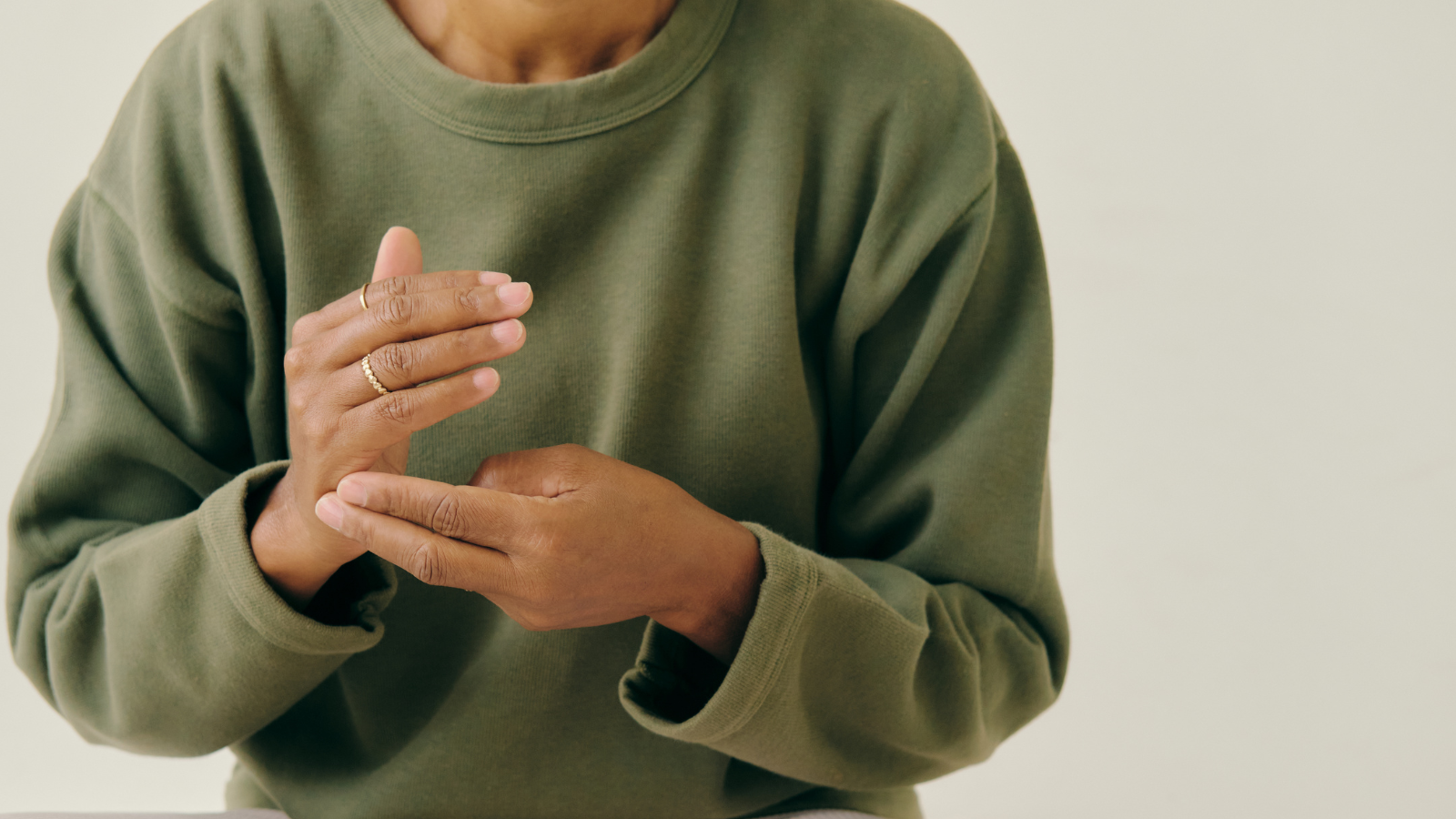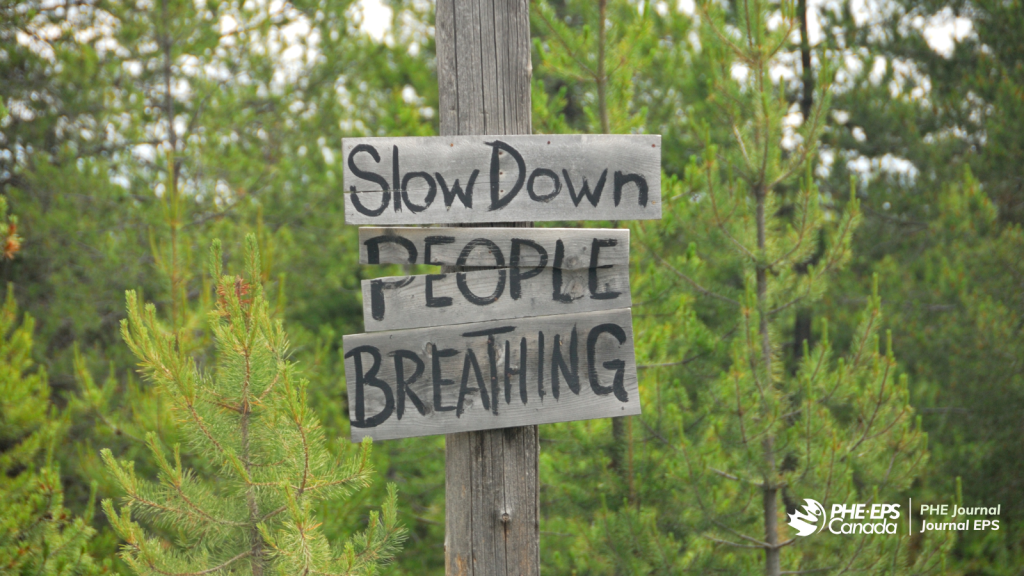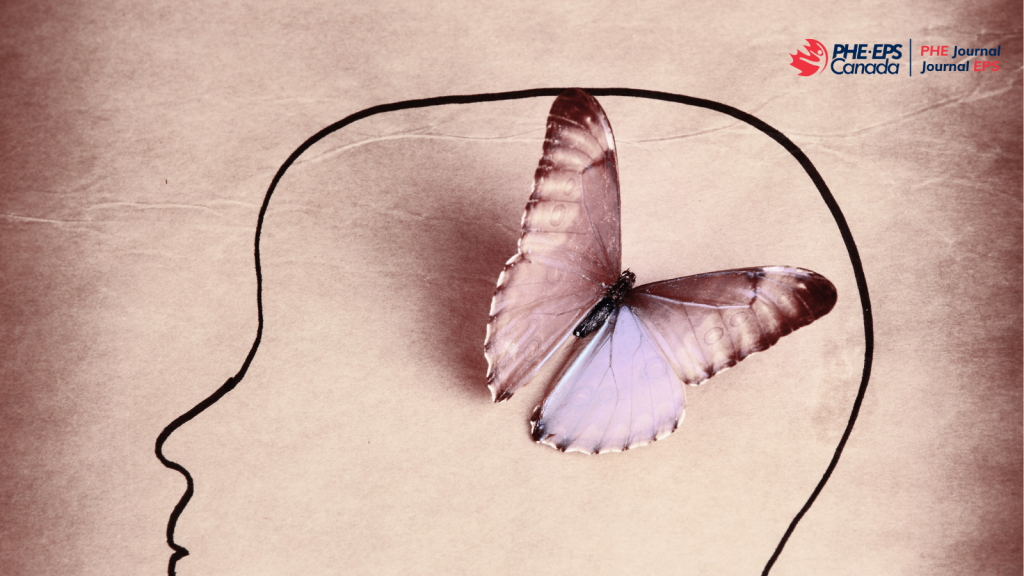Summer Break: A Time to Cultivate and Embody Moments of Rest With 9 Different Quick and Easy Mindfulness Practices

Hooray, you made it! Summer break is finally here. Your emotions are probably high, your body may feel tired, and you are most likely ready for this break. When switching from an “on-the-go” routine to a “slow-down” break it can have effects on our nervous system. I often think of this switch to summer break like slamming the breaks of a car and wondering, "What now?"
Often when this happens and we transition into summer break our bodies, mind, and soul may need some time to adjust and recover. For some teachers, this may be a time when your system feels safe to let down its guard and you get sick, while for others, the mind continues to remain "on-the-go" and you need to continue doing and planning. Resting can feel strange for some, but it is necessary to take care of ourselves. The intention of the mindfulness practices in this article are to provide you with various self-care tools to help prepare your body and mind come the new school year.
You might be wondering at this point, "But, how do I slow down?"

One way to help PHE teachers rest and adjust over the summer can be by taking advantage of this slower pace environment and implementing mindfulness activities into your new routine. The first step of the "slowing down" process is: to allow for adequate rest. This may feel foreign to some PHE teachers, but it is important to engage in. To do this, it requires us to become aware of how busy our minds actually are and this may take some time and practice to implement. This is where mindfulness practices can help. The purpose of mindfulness practices is to not let our thoughts carry us away into more “busy thinking” patterns, but to create a space for us to notice the thought(s) and let it go. Once we’re able to pay attention to our thoughts and "“let them go" using mindfulness practices, this will become easier and more natural for us to implement, helping us experience adequate rest.
What you may also find interesting about mindfulness practices is that not only do they allow us to pay attention to our thoughts and help with moments of adequate rest, they have also been shown to improve or maintain one’s general intelligence (i.e., ability to use reasoning to solve problems) and executive functioning skills (i.e., self-control, organization, working memory, metacognition, time management, etc.). In Dr. Dan Siegel's book, "The Mindful Brain", he provides various research evidence of how mindfulness practices cause physical changes in the medial prefrontal cortex (i.e., thickening of the lobe) affecting 9 different functions/skills.
Now, you might be saying, "This sounds great! How do I get started?"

It’s easy! Next is step two: getting started with implementing mindfulness practices. Below, you will find 9 different mindfulness practices that relate to a different function/skill from Dr. Dan Siegel’s book. These mindfulness practices take approximately 5 minutes to complete, which helps easily implement these into your daily or weekly routine. Summer break is a great time to take advantage of this slower pace and to either start or continue mindfulness practices. You can engage in these practices anytime throughout the day, do them indoors or outdoors, and even model and include your family members into times when you are together like breakfast, lunch, or dinner. I hope that these mindfulness practices will help you cultivate and embody moments of rest into your everyday life so that when you return to your classroom in September you can return with present awareness and self-care tools.
Body Regulation is achieved by the Autonomic (automatic) Nervous System. This system generally works without conscious control and regulates functions like heart rate, breathing, digestion, vascular tone, inflammation, immune response, etc.
Mindfulness Exercise: Body Scan
This mindfulness practice is a body check-in to notice what you are feeling and experiencing and can help you connect with where your nervous system is in the present moment.
Long term effects of this check-in will lead to regulating your inflammation and recognizing stress in your body to help manage it. The great thing about this exercise is it can be done anywhere at any time - just don’t close your eyes if you are driving.
- To start, find a comfortable location (i.e. outside, in your room, etc.) and position (i.e. standing barefoot on grass, sitting cross legged, etc.).
- Close your eyes and scan the parts of your body starting at your head and down to your toes.
- Pause at different moments during the scan. Focus on each part of your body and notice what you're feeling before moving on to the next. Don’t worry about your breath, just focus on each body part. If you get distracted or your mind wanders in thoughts, notice them and move on to the next body part.
- Overtime and with more practice, you will be able to better connect with your body and this can help with starting to relax.
- Check out this FREE app that you can use called Insight Timer. You can find different body scans on this app to listen to until you can guide your own.
Attuned Communication is defined as the coordination of input from another mind with the activity of one’s own, a resonance process involving these middle prefrontal areas. This is distinct from other resonant functions such as those achieved by the mirror neurons in the motor cortex that automatically interpret the motor actions of another as one’s own.
Mindfulness Exercise: Active Listening and Mirroring
This exercise can be practiced with our family or friends. When we feel and see that someone is actively listening to us, it helps us create a deeper connection to that person and a felt sense of understanding. When interacting with someone, try to only listen and not speak. Notice what their body language cues are and try to copy it.
In this sense, we are paying attention to what we notice and see in the other person. Being able to tune in and sense and connect with others non-verbal (i.e. body language) and verbal (i.e. speech) cues helps us connect to that person on a deeper level. This is such a great tool for teachers as it helps us build a deeper connection with each student as well as a sense of safety for our classroom.
Emotional Balance in this context is defined as being able to balance between rigidity and chaos. In other words, being able to keep from being overwhelmed or becoming inflexible in one’s emotional response. This balance is a much healthier coping mechanism and can be referred to as self-regulation.
Mindfulness Exercise: Gratitude Journal
Writing down things you are grateful for everyday can help you balance your emotions and tune into what is really important.
Adding a gratitude journal to your morning routine will help start your day off with this positive energy. For example, you could choose 3-5 things that you are grateful for to write in your journal daily. It can be as simple as “Today I am grateful for my family” or you can write more about why you are grateful for your family.
Response Flexibility is the capacity to pause before action. Such a process requires the assessment of on-going stimuli, the delay of reaction, selection from a variety of possible options, and the initiation of action. This pause allows us to not react. It gives us time to take a breath and assess before reacting. The outcome can then be much better for our nervous system to avoid being too quick to respond and perhaps, make mistakes.
Mindfulness Exercise: Mindful Bell
This mindfulness practice is a cue to stop, pause, and breathe. It can take place anywhere and the more we practice this PAUSE the more we create a program for it to happen. In the beginning, it will be helpful to notice when you do react or are overstimulated and then work on “pause” at that point.
- To start, select a sound/signal cue or action that you will encounter throughout your day (i.e., hearing the daily alarm bell on your phone, after you finish brushing your teeth, before you eat a meal, etc.).
- When you complete that action or hear that sound cue, pause and take 3 slow, deep breaths. For example, a 2-4 count inhale and a 2-4 count exhale.
- Many smart watches or other mindfulness devices/apps have push notifications for cues like this which can be an alternative daily reminder for engaging in this practice.
Empathy is defined as conscious awareness and sensitivity to the mind of someone else. Think of this as the capability to put yourself in someone else’s shoes and feel what they are feeling to better understand them.
Mindfulness Exercise: Nature Walk
Taking a walk in nature and bringing curiosity into your walk can help develop this skill. Taking the time to connect with nature and animals helps us find a sense of peace and joy which can help build our empathy/mindsight.
Examples of engaging in this practice can be:
- During walks or when you are outside somewhere, stop and be curious about a tree, plant, flower, animals, or any other part of nature you see. Practice being present in that moment and appreciating connecting with nature.
- Another simple practice can be going outside in the grass barefoot and taking a few deep breaths to ground us such as performing a body scan.
Insight links the past, present, and future. Insight helps develop our self-awareness which in turn, can increase our self-confidence in our knowledge and work supporting us in making better decisions. As teachers, when we model self-awareness to our students, it can help them develop this skill and build their confidence too.
Mindfulness Exercise: Formal Meditation
This mindfulness practice takes around 10-30 minutes and involves doing more specific, traditional forms of meditation. When you have a daily meditation practice, this can help deepen your insight and enhance your self-awareness. There are many different formal meditations you can do that you can try on the Insight timer. Something that you can try is called "Inner Smile Meditation".
You can try the "Inner Smile Meditation" practice after completing a Body Scan (see above). This practice is recommended to take 21 minutes to complete since anywhere between 20-30 minutes is the time required sitting in formal meditation to fully calm the mind down and learn to control. 21 is also the recommended time since 21 is the number of days it takes to form a habit. You will still benefit from sitting even just for 5 minutes doing this mindfulness practice, but overtime, I recommend to build up on the amount of time you engage in formal meditation practices.
- To begin, sit comfortably on a chair or cross legged on the floor.
- You will repeat verbally or in your mind different sayings during your breaths - INHALE: "I am breathing" and EXHALE: "I smile". Note: You do not have to smile but you may notice yourself smiling, which is good!
- Once your body and mind have relaxed, you can begin to observe the mind. This is where you will find insight, by observing your mind and body - What are you noticing? What are you feeling? For clarification, observing the mind is similar to watching it like an outsider would. Every time you get engaged or start storytelling and imagining things, you are encouraged to notice that (self-awareness) and come back to "watching" the mind and being present.
This modulation is all about calming the body and mind by being able to come back from our fight, flight, freeze, or fawn responses. If our body and mind is better equipped to handle fear, then rebalance itself (regulate), we are much less likely to get sick and develop unwanted inflammation. Fear is a normal stress response and it is not something bad to experience. However, the challenge in our modern world is that our fear response is coming on in more frequent cases, such as anxiety and worry which can get out of control, and unfortunately, wreaking havoc on our nervous system.
Mindfulness Exercise: Breathing Techniques
Many mindfulness & meditation practices will help with fear modulation as a lot of them involve engaging in different or similar breathing techniques. For example, square breathing.
- To start, close or open your eyes and picture a square or use your finger to draw one in the air.
- Follow this sequence: on the first line of the square inhale for 3 seconds - second line - hold the inhale for 3 seconds - third line - exhale for 3 seconds - forth line hold the exhale for 3 seconds.
- Repeat this breathing exercise for 2 - 3 minutes or longer if desired.
Have you ever heard of the saying, “Listen to your gut feelings”? There is a lot of science behind that because of the vast network of neurons in our digestive tract. Many scientists have explained that this part of our system has a strong neurological connection to the medial prefrontal cortex which can trigger nonconscious emotional responses. People often register this response as a “hunch” or intuition.
Mindfulness Exercise: Focus on the Quiet Space Within
This is a mindfulness practice that can take place anywhere from 1 to 10 minutes and is intended to support you in getting more connected with our gut feeling or intuition. In this practice, you will be noticing whatever arises in the moment and become curious about it, and then let it go.
For example, if all of a sudden you start thinking about your grocery list, notice this thought and then bring your awareness back to the quiet space of your breath. You can engage in this practice anywhere such as before bedtime, as soon as you wake up, while you are cooking a meal or any time you feel you need to check in with what is happening around you.
In this context, morality means the ability to think of the larger social good and enact those behaviors, even when alone. This can be tied to our values, intentions, and services such as reflecting on, “Are we serving more than just ourselves?”
Mindfulness Exercise: Metta
This is an ancient Buddhist meditation for love and kindness intended to learn how to develop deeper compassion for ourselves and others and is considered an example of a formal mediation. This is a longer mindfulness practice, but it’s very beneficial to help us in connecting with ourselves and prioritizing moments of rest.
- To begin, set yourself up in a comfortable seated position or cross legged on the floor either in nature or in a quiet space in your house.
- Next, you can use this script to support you through this type of mindfulness practice: https://www.lionsroar.com/metta-meditation-guide/
References:
- Andrew E Budson. (2021). Can mindfulness change your brain? [online]. Harvard Health. Available from: https://www.health.harvard.edu/blog/can-mindfulness-change-your-brain-202105132455 (Accessed January 2024)
- "Insight Timer - #1 Free Meditation App for Sleep, Relax & More." insighttimer.com/en-ca.
- Siegel, Daniel J. The Mindful Brain: Reflection and Attunement in the Cultivation of Well-Being (Norton Series on Interpersonal Neurobiology). W. W. Norton & Company, 17 Apr. 2007.

.png)



%20PNG.png)


.png)








